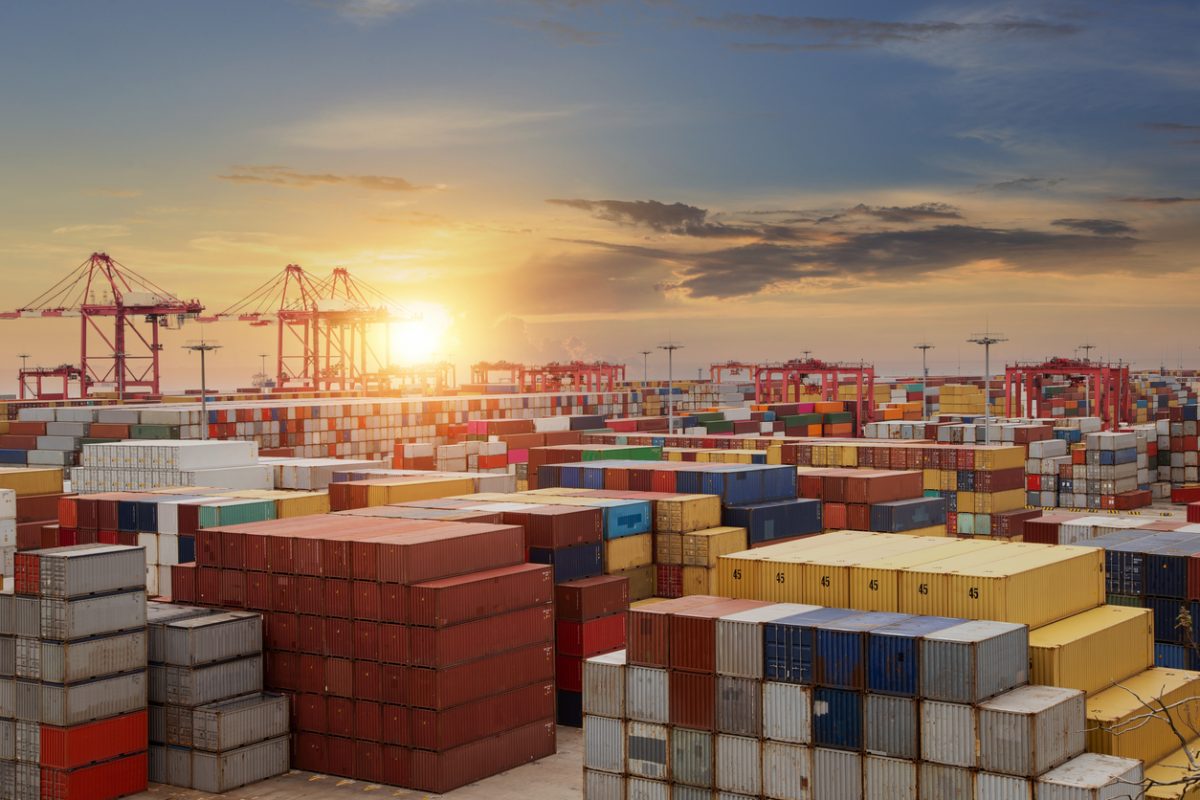The shortage of computer chips which is putting increasing pressure on this country’s automobile industry is the subject of almost daily newspaper reports. And even when the components, most of which come from Asia, are available, the route to the factories in Europe is still a long one. The next crisis is already in full swing, spanning large areas of the logistic sector. The causes are manifold.
As a result of the outsourcing of production to countries with comparatively low wage costs, the supply chains have become highly elongated. Over time, they have been consistently optimized to make goods available just-in-time, without generating costs for interim storage. This highly-coordinated system leaves little wriggle room for deviations. Just how interference-sensitive the international network is came into public focus at the latest in March of this year when a container ship, the Ever Given, ran aground in the Suez Canal.
Traffic jam in the Suez Canal
Long since accustomed to the “ordered today – delivered tomorrow” promise of many online dealers, consumers had to school themselves in patience in spring. The Egyptian authorities having impounded the Ever Given, which was sailing under the flag of Panama, until July, awaiting an agreement on compensation, the ship reached Europe’s largest port, Rotterdam, some weeks later. For six days, the Ever Given blocked the Canal so that hundreds of ships were unable to pass through the most important transit route between Asia and Europe. Among the items of freight, wrote the Frankfurter Allgemeine Zeitung, where bicycles, a product which, just like furniture or exercise bikes, had become highly popular during the lockdown phase of the pandemic.
Too few containers, ports blocked and staff shortages
Figures from the Organization for Economic Cooperation and Development (OECD) show that 90 % of internationally traded goods cross the oceans. The central components of the global network are the sea freight containers, standardized large-scale containers, which permit the transport of the most varied of goods without these having to be transloaded in the course of the transport chain. China, the country first affected by the Covid pandemic, was also the first to recover from it. The previously down-scaled production and export of goods picked up again.
The change in consumer behavior away from services and towards consumer goods also significantly increased the demand for goods Made in China. Then Chinese ports were hit by a shortage of the containers required for their transport, which were piling up in the harbors and warehouses of Europe and the US. The Covid restrictions had led to a further reduction of what were already inadequate staffing levels in the logistic chain, as reported by CNBC. These staff shortages still prevail today and are leading to a backlog of ships in many ports. In the past week, for example, over 60 ships were waiting to dock in the port of Los Angeles and the neighboring Newport in California as the Wall Street Journal reported. Prior to the pandemic, it was unusual for more than one ship to be waiting for a free berth, writes the paper, quoting Gene Seroka, Executive Director of the Port of Los Angeles. Massive ships such as the Ever Given can transport 20,000 and more containers, and the results are corresponding dramatic when their transport capacity is unavailable due to having to wait at sea.
In Rotterdam, inland waterway vessels which take over the further transport of the goods up the Rhine wait for up to 200 hours for admission to the port, as deep-sea ships are given preference when it comes to the assignment of berths, as Tagesspiegel reported recently. In Hamburg too, the situation is so tense that some shipping companies are shifting to other North Sea ports such as Wilhelmshaven or Bremerhaven, reports Focus.
Effects to prevail to mid-2022?
The high demand for transport capacity is leading, in turn, to higher freight prices. According to the maritime research consultancy Drewry, the transport price for a standard 40-foot (12.2 meter) container from Shanghai to Rotterdam has risen by 565 % in year-on-year comparison. Sooner or later, the prices will be passed on to the consumer.
An early stabilization of the seriously disrupted supply chain is not currently foreseeable. The investment bank Jefferies anticipates no tangible improvement before mid-2022, according to Business Insider. For industry, this means that the shortage of primary products and raw materials will continue to hamper production. It’s hardly surprising that the Federal Ministry of Economics concludes in its report that supply bottlenecks pose the greatest risk to further economic development in Germany.
And this is not good news for retailers’ Christmas trade either; it is likely that not all the goods consumers are looking for will be available in sufficient numbers. Purchasing managers report ongoing difficulties in the procurement of goods for the last quarter, writes the Association for Material Management, Procurement and Logistics (BME). This will probably not remain the only episode of supply chain disruption as the next crisis is looming in China. The rationing of electricity in numerous provinces there is leading to the curbing of production, in particular in the manufacturing of energy-intensive products. The rationing is intended to reduce emissions in order to achieve the country’s own climate targets. China’s electricity originates predominantly from coal-powered generators. At the same time, the fuel price has risen steeply and stocks in many power stations are exhausted, as recently reported by Deutsche Welle. The BME anticipates that the energy problems could lead to further pressure on the consumer.
Photo: iStock/Alex_Wang1


